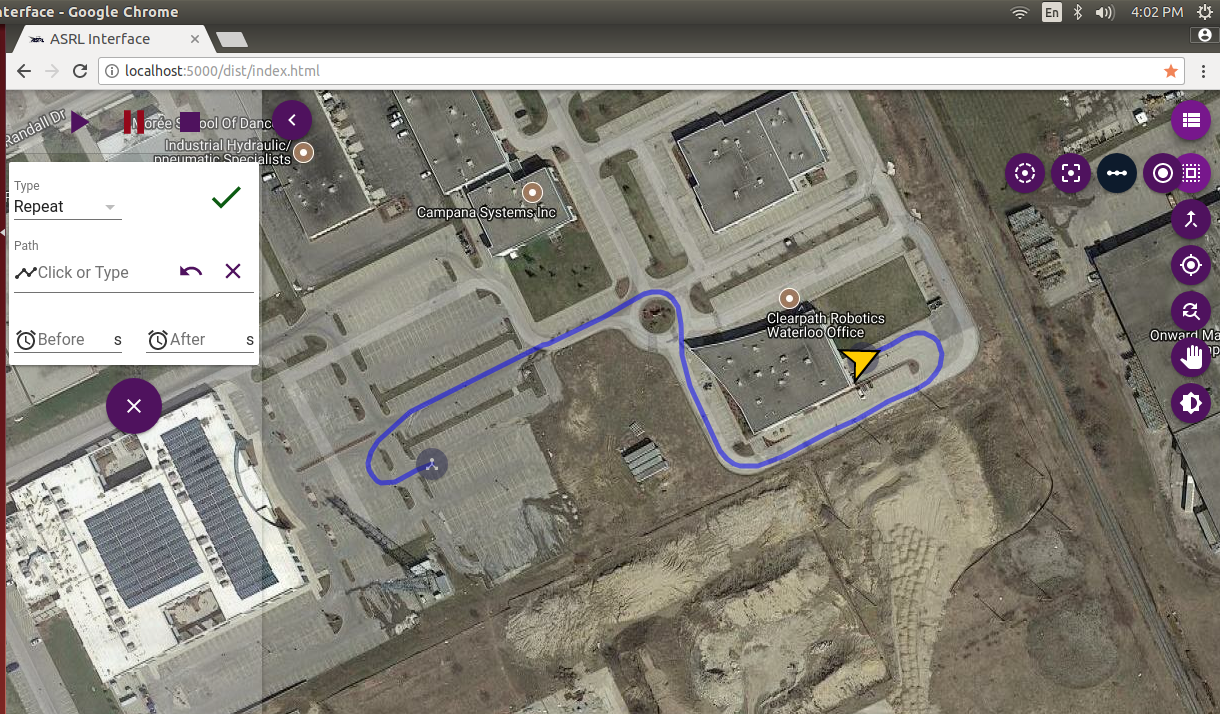Last month, we introduced the GPS Waypoint Navigation package, which is the ability to provide a robot with a set of GPS waypoints (i.e., a set of latitude / longitude pairs), and have the robot autonomously navigate from its current location to each of the defined waypoints. In a similar fashion, this month we are excited to showcase the Visual Teach and Repeat package.
What is VT&R?
For those who are unfamiliar, the visual teach and repeat (abbreviated “VT&R”) package, enables long-range autonomous operation of a mobile robot in outdoor environments, using only a stereo camera. This technology opens the door for many applications that benefit from repeated traversals over constrained paths, such as orchards, mines and factory floors. Since the software is vision-only, the software can easily navigate robots in GPS denied environments, which can be a major pitfall for other outdoor autonomous navigation systems.
Similar to how you would learn to drive in a new area, this navigation method has two phases: “teach phase” and “repeat phase”. During the teach phase, the robot is manually driven to build a map or route network. The VT&R processes captured images by extracting features and estimating records of a persona and attitude of the robot. In a similar way, learning a new area requires you to drive all over the area and build a sort of “mental map” of the roads.
In the repeat phase, VT&R uses this constructed map to localize and drive the vehicle autonomously. In this phase, the robot can start at any point on the previously traversed route and can go in either direction to the other point on the map. Similarly, once you have a “mental map” of an area, you can start on any road and understand how to navigate to a new destination.
Why do I need VT&R?
Why should you consider using VT&R? To start, it is the only complete autonomous navigation package for outdoor environments that is available on the market that has been tested in long range missions. The state of the art programming methods and modular implementation of the software makes it possible for researchers in academia and industry to adjust various parameters and experiment their ideas on the system. The high accuracy of the software in executing missions makes it a perfect tool for research and industry customers who want to remain as frontiers of their field.
Software Highlights
Below is a list of some interesting features of the software that help keep it robust, reliable and safe:
- Multi-channel image processing makes the navigation stack resilient to illumination and weather changes.
- Multi-experience localization robustifies VT&R to dynamic changes (objects, geometrical changes, weather, etc) in the environment.
- VT&R has an advanced configurable image processing module that supports feature extraction methods such as ORB and SURF.
- An adjustable path planning module based on distance and time makes it possible to program the robot to prioritize routes that has been visited more recently.
- Configurable path tracking module of VT&R allows advanced users to tune the model predictive controller (MPC) parameters.
- The ROS agnostic data logger of the VT&R makes the software a perfect tool for surveillance and data collection.
- An easy to use web-based user interface for submitting missions on the robot.
Ease of Use
All those features can make the program sound complex and intimidating. However, VT&R is not too complex to use. The web-based user interface makes it possible for the operators to interact with the software in the easiest possible way. VT&R also has a well-documented user manual and API list that can be used by advanced users who want to change configuration of various modules in the system.

Web based user interface of VT&R
Since VT&R navigate robots solely based on the image stream input to the system, it does not require access to any low-level information of your platform. This salient feature makes it possible to implement VT&R as a retrofit product on a wide variety of platforms.This concludes part one of the VT&R blog – stay tuned for more information coming out soon in part two. To learn more about the Visual Teach & Repeat package available online, click here. Don’t forget to subscribe to the blog to stay up to date on all things robots!
Continue reading on Part 2 of our Visual Teach & Repeat: A Closer Look series.

